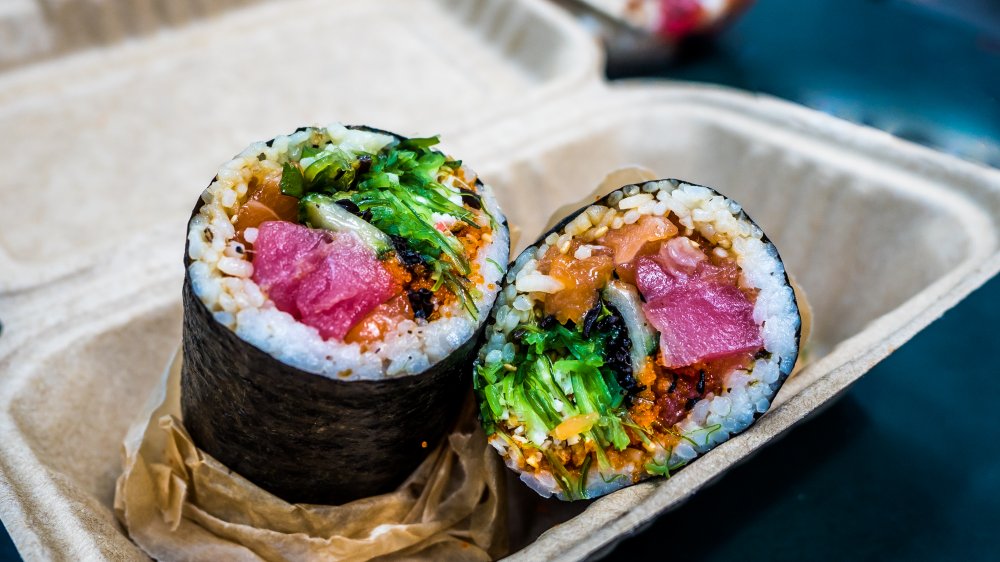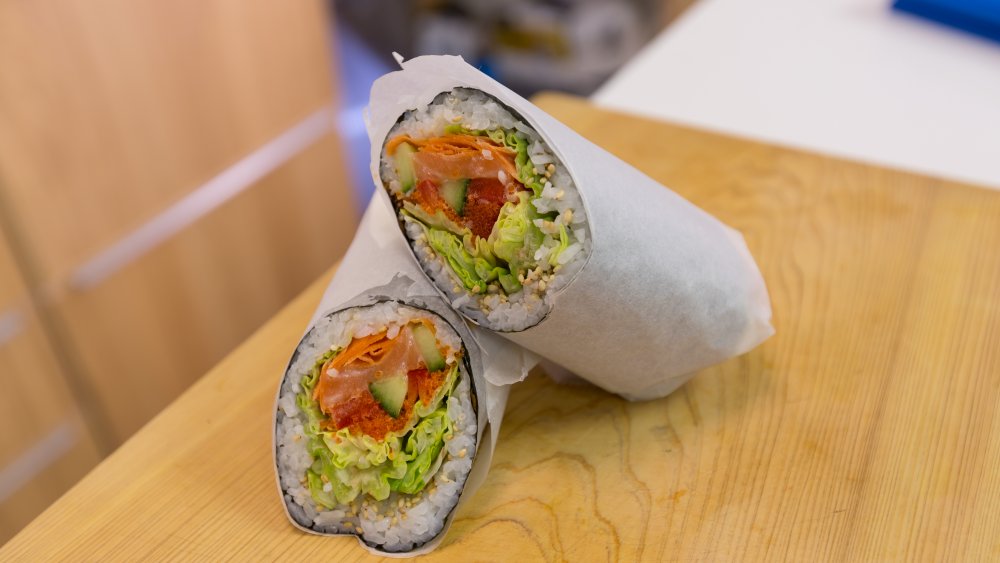What You Didn't Know About Sushi Burritos
If you're a fan of fusion food, you've probably heard about the hipster food trend that is the sushi burrito. Essentially a mix of Japanese and Mexican cuisine, sushi burritos offer foodies a chance to get the best of both worlds by treating their tastebuds to an eclectic mix of flavors. According to Delish, the sushi burrito can be best described as a mashup of sushi and a sandwich that makes for a convenient lunch option if you're looking to try something entirely different from your usual and are interested in a little taste bud experimentation. Thanks to its unique mixture, this combo unsurprisingly ended up being a huge hit.
In fact, sushi burritos have gained so much popularity that chain restaurants have popped up dedicated to the dish and even Starbucks added a sushi burrito item onto its menu back in 2017 (via Delish). But have you ever wondered how the sushi burrito trend began? Its origin story is a fascinating one that'll probably pique your interest. Read on for more details on what exactly got sushi burritos into the market.
The sushi burrito was inspired by boring lunch options
As described by The Manual, sushi burritos combine elements of sushi such as raw fish, vegetables, and rice with traits of a burrito, like salsa, guac, and the roll itself. The original sushi roll was the brainchild of Peter Yen, founder of Sushirrito, who came up with the concept to break away from monotony in 2008.
When he was asked to explain what inspired him, he said, "In 2004 ... I was working in downtown San Francisco and got bored with the usual lunch options. I started wondering why there weren't more choices other than the typical sandwich, soup, and salad options." He added that sushi was something he really liked, but noticed that the stuff available inside grocery stores was not high-quality and traditional sit-down experiences were too time-consuming for a regular day.
Yen took matters into his own hands late when he was in business school and worked on his idea of sushi rolls. They were essentially, from Yen's perspective, meant to be produced quickly for hungry diners looking for a unique sushi-based meal that also had an eclectic mix of Latin flavors. His idea thus broke away from the restrictions placed on sushi and introduced a fresh, fast food idea that could easily be experimented with in the form of fusion food.

